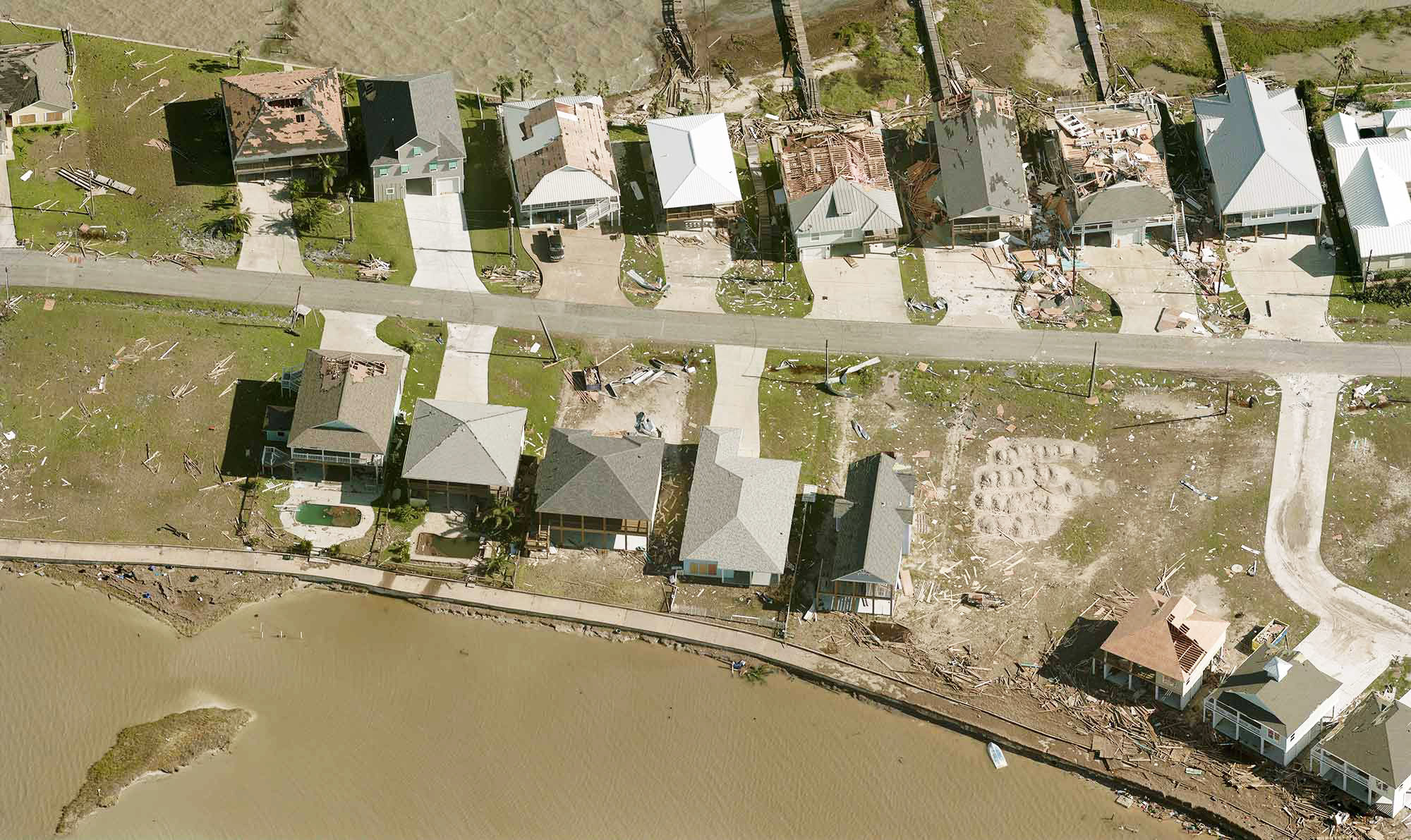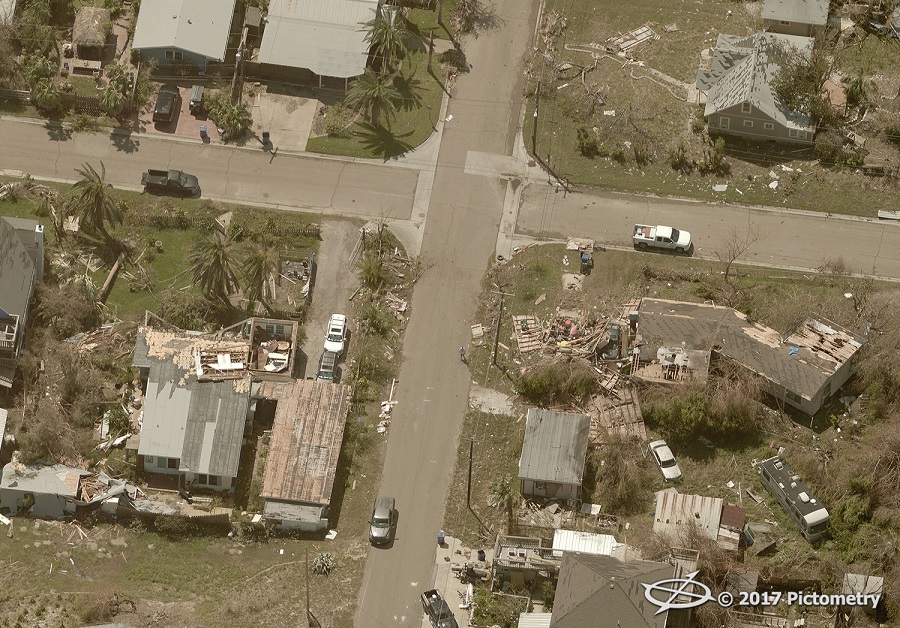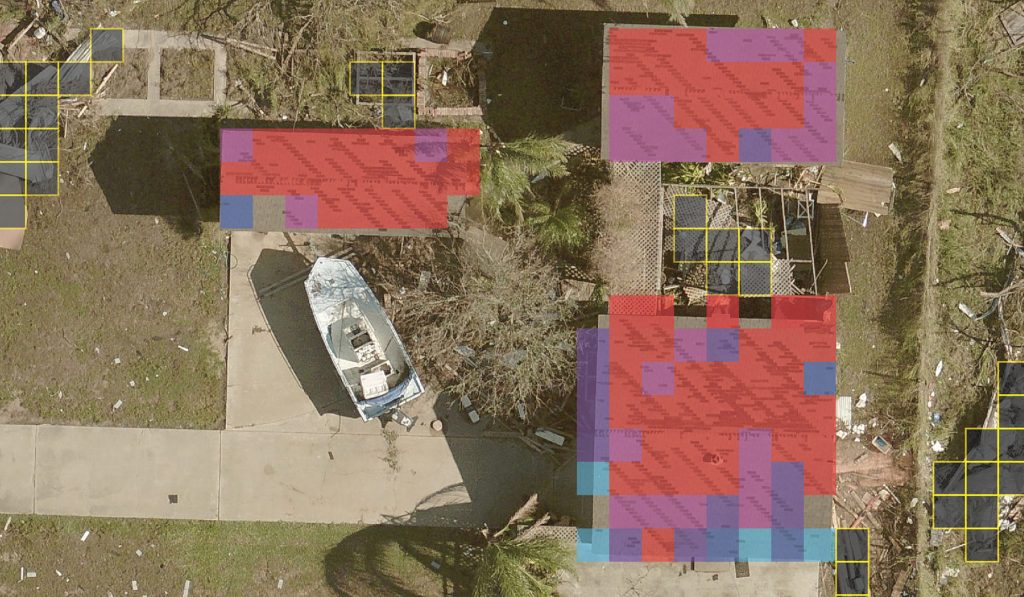 Updated January 2019
Updated January 2019
In December 2017, the National Association of Counties (NACo) hosts its
Disaster Response and Recovery Social Media Day. NACo
asked counties on Twitter to share what resources they use to prepare for or respond to a crisis.
One trend among counties that responded was the formation of local partnerships and task forces with private organizations and members of the public in order to create stronger, more resilient communities. Resiliency plays a key role in recovery efforts following disasters such as Hurricane Harvey in Texas and Hurricane Irma in Florida.
After a hurricane or other catastrophic weather event, communities look to local leaders, federal disaster relief programs, and property & casualty insurers to help them get back on their feet. Insurance carriers, in particular, play a critical role in a community's recovery after a storm of any size.
The Effects of the Hurricanes

An aerial view of a neighborhood after Hurricane Harvey
Hurricanes Harvey and Irma were
among the costliest hurricanes in U.S. history, after Hurricane Katrina in 2005.
Even today, thousands of people—many of whom were without homeowners insurance—are still displaced after both storms.
Approximately 47,000 Texans were living in hotel rooms paid for by FEMA at the end of November 2017 and were making their way back to their homes. According to
The Texas Tribune,
January 16, 2018, was the agency’s final deadline for the transitional sheltering assistance (TSA) program.
Over the course of 308 days, FEMA
funded hotel rooms for 54,640 families. By the end of the program, however, there were still 700 families still staying in hotels and forced to foot the bill themselves.
Flood Damage and Coverage
Much of this year’s hurricane damage resulted from flooding in and around properties. The National Flood Insurance Program
received more than 120,000 claims,
Insurance Journal reported, making 2017 the second largest claims year in the program’s history.
By comparison, the number of NFIP claims received in 2018 after Hurricane Michael seems extremely low:
just over 4,000 claims received by mid-December, according to FEMA. Private flood insurance claims, on the other hand, totaled
fewer than 200.
However, these figures stem from those who actually carry flood insurance policies. Many Americans are unaware of why they need flood insurance, especially if they believe they live in an area that won’t become flooded. Yet every part of the United States is a flood zone, with each region facing varying amounts of risk for a flood.
One common
flood insurance myth is that a 100-year flood zone, for instance, means that flood could occur just once every 100 years. What that really means, however, is that every year there is a one in 100 (or 1%) chance of flooding in the area. A flood could occur more than once in a 100-year period.
Faster Solutions for Insurance Carriers

Machine learning technology applied to EagleView's high-resolution imagery
Following Hurricane Harvey and Hurricane Irma, many P&C insurers realized that they needed a faster way to identify the areas hit hardest. The more information they received up front, the faster they could begin processing claims.
After a disaster, local and state authorities, federal agencies, and insurance carriers rely on solutions like
EagleView OnSite™ to make informed decisions. Using a combination of imagery sources and machine learning technologies, EagleView identified the areas with the most damage from the storms. With
image capture efforts coordinated and drone resources deployed, EagleView was able to bring imagery and data to government agencies and insurance claims adjusters.
Recovering from a hurricane or other major event takes time. With the right resources, however, government agencies and private insurance carriers alike can help communities rebuild.
Learn more about how EagleView serves insurance carriers and claims adjusters.